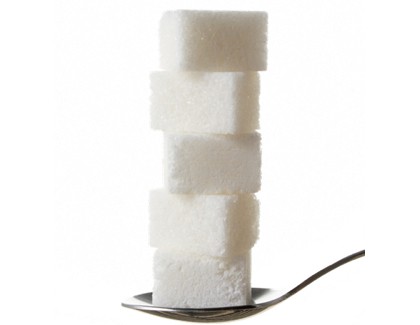There’s a good chance that you are more conscious of sugar in your diet than ever before. Between the New York city soda serving size controversy and the recent rise of agave and stevia sweeteners, it seems we’re awash in information about the sweet stuff. But if you’re still confused about which sugars are “natural” and which aren’t, how much sugar is too much sugar, what the glycemic index is (and if you should care about it), and how sugar plays into the Guiding Stars rating system—I’ll be addressing these topics in a series of blog posts over the next couple of weeks and in a free webinar.

Natural vs. Added Sugars
Humans LOVE sweet foods. In fact, the preference for sweet foods is “hard-wired” into us. Sweetness doesn’t just taste good, its presence in foods is thought to be a signal to our bodies that those foods are a safe source of calories—energy to fuel our muscles and brains. So, there’s no need to get down on yourself for taking delight in that ripe banana, that OJ, the jam you spread on your toast or even that cookie you just ate. Yes, this time you get to blame genetics.
Before you consider that license to indulge in sweets with abandon, however, consider this: our bodies would be completely happy with just the naturally-occurring, or intrinsic, sugars in foods like fruit, vegetables and dairy products. Is naturally-occurring sugar any different than added sugars? Let’s see…
Sugar’s Building Blocks
At its most basic level, sugar is sugar. Various sugars are made up of the same building blocks, so to speak. Chemically, all sugars are made of molecules called monosaccharides, or simple sugars, that are put together in different ways. Glucose, galactose and fructose are monosaccharides. When these are linked together in specific ways, a disaccharide is created, such as sucrose (aka table sugar) which is glucose + fructose; or lactose (milk sugar) which is glucose + galactose.
Maple syrup is a natural product that is made up of glucose, fructose and sucrose, while honey is very similar to table sugar. Some sugars come with a sprinkling of nutrients, such as iron and other minerals. It’s not much, and it’s certainly not advisable to try to fulfill your nutritional need for minerals through eating sugars! All in all, whether it’s molasses or honey or table sugar or agave, sugar is sugar and the body breaks all of them down to the same “building blocks” in order to utilize them.
Eating Less Added Sugar?
What IS important to pay attention to is your consumption of added sugars. What are those exactly? Any type of sugar that’s added to food during processing or preparation, or even at the table is considered an “added sugar.” The source of the added sugar can be rather natural, such as with honey or maple syrup, or it can be manufactured, such as corn syrup or table sugar.
Regardless of where it comes from, added sugars are extras. In fact, most people consume much more sugar (from added sugars) than is recommended by health authorities. The World Health Organization, the Institute of Medicine, the American Cancer Society, the American Heart Association and the US Dietary Guidelines (2010) all call for limits on added sugar intake. The WHO’s recommendation of less than or equal to 10% of total daily calories is easy to figure out: if you consume 2,000 a day, then your added sugars should total no more than 200 calories worth. Since each teaspoon of sugar is about 16 calories, that 200 calories translates to 12.5 teaspoons of added sugar per day.
Should You Make A Sugar Swap?
Simply swapping out refined sugar and replacing it with more natural sources (such as honey or agave syrup) will not necessarily improve the quality of your diet.
Instead, use these approaches:
- Choose fewer sugary, processed foods (sweet baked goods, ice cream, candy and sweet beverages)
- When deciding between two comparable items, choose the one that earns more Guiding Stars. The Guiding Stars rating system takes all added sugars into account when determining star-worthiness, and products with more added sugars receive more debits, and more debits lead to fewer stars. Intrinsic sugars are not included in the rating system, since they are not a health concern.
- Learn to recognize ingredients that are synonymous with added sugars.
Added Sugars On The Label
- Sugar
- Cane sugar
- Beet sugar
- Brown sugar
- Corn syrup
- High-fructose corn syrup
- Corn syrup solids
- Malt syrup
- Maple syrup
- Pancake syrup
- Liquid fructose
- Honey
- Molasses
- Crystal dextrose
- Fruit juice concentrate
- Sucrose
- Fructose
- Maltose
- Lactose